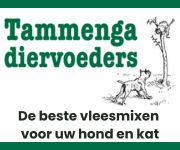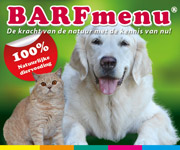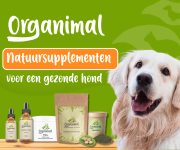From the desk of Mogens Eliasen, for immediate release
This article may be reprinted without further permission
when brought in its entirety, including the bio the end.
August 25, 2004
The Salmonella myth
Salmonella is, together with Rabies, a very unique disease: it can affect both
humans and dogs! No other known diseases can do that. Unfortunately, this leads
many people to fear Salmonella infections from their dogs, and veterinarians and pet
food manufacturers alike are quick to support this fear, regardless the risk being
utterly negligible.
How dangerous is Salmonella?
First thing to do is to get a serious understanding of what Salmonella is and how
dangerous it is to humans.
Salmonella is a bacterium that can cause some unpleasant reactions in our
gastrointestinal system, like vomiting and diarrhea, and often also fever. The attack
might last about a week. From the US Center for Disease Control and the US Center
for Health Statistics, you can find that, out of 1.43 million reported cases over the
two years 2001-2002 in the USA, 585 died, almost all them being infants and people
over 91. About 556 of those infections are known to be caused by food, not pets.
That leaves a maximum of 29 to possibly be caused by infections coming from dogs
and all other non-food sources... Considering the USA's population of 293,000,000,
Americans thus have a risk of about 0.25% per year of getting infected with
Salmonella, and 0.05 ppm (ppm="parts per million") of dying of a Salmonella
infection! Compare that to a yearly risk of 108 ppm for a man (33 ppm for a
woman) in the USA to get murdered, about 100 ppm for getting killed in traffic, and
11 ppm for a person less than 91 years old to die of Influenza or Pneumonia.
Add to this that there has been research done showing that dogs do not carry
Salmonella in their saliva or on their skin, not even after eating 100% Salmonella
infected raw food! But, when they do eat Salmonella infected food, about one third
of them will show a moderate concentration of Salmonella in their feces – yet no
clinical signs of being sick.
This means that the only way those 29 Salmonella deaths in 2001 and 2002 possibly
could have been originating from infection through dogs would be that the people
had eaten dog poop from an infected dog… (You can make your own guess at how
many of the 29 actually did that!)
The commercial scaremonger
Nevertheless, you will repeatedly find articles and posts, online and offline, typically
sponsored by pet food manufacturers or veterinary association, about the dangers of
Salmonella.
Well, given the facts above, it does not make sense from a point of view that is
dictated by health concerns. The risk is ridiculously small, if not outright ludicrous
to worry about…
But it makes a lot of sense when you consider the commercial aspects of it…
You get a serious perspective of the size of the "Salmonella problem" when you
consider that the Canadian government a couple of years ago published that an
estimated 80-85% of all chicken in North American supermarkets (approved for
being sold to consumers!) was in fact infected with Salmonella. When I, back in
2000, phoned the US FDA to get this confirmed, I did indeed get it confirmed... So,
it is a "general problem", not just in Canada!
As mentioned, raw fed dogs have been show to have a generally higher chance of
showing Salmonella in their poop than dogs fed sterile kibble full of poisonous
chemicals (called "preservatives" in order to kill all kinds of micro-organisms). No
surprise... something would have been seriously wrong with fundamental biology
and chemistry if this were not the case!!! (Actually, it might be surprising that only a
third of the dogs fed Salmonella contaminated chicken showed Salmonella in their
feces – it shows how effective the dog’s stomach is at killing such infections!)
So, if Salmonella seriously were problem for the public health, then why should it
concern us that 30% of all dog poop is infected, when it is acceptable to have 80-
85% of all edible chicken infected? Which source would be the greater danger for
healthy people?
There is only one conclusion: SALMONELLA IS NOT A SERIOUS HEALTH CONCERN
FOR OUR GOVERNMENTS! And it shouldn’t be.
Now, why are pet food manufacturers (and vets paid by them) then financing
studies to the effect of showing the link between raw food and Salmonella in poop?
There is, of course, only one answer: money.
How scaremonger can be turned into profit
The trick is to see how the leading pet food manufacturers can make money on this.
This way: many of them published many "scientific articles" online that point out all
kinds of dangers of raw feeding. Why? Because they are seriously concerned about
the loss of what in the past was an obvious market they could control! I am no
longer alone about advocating raw food for dogs - and the raw-food advocates
spread the words about what makes sense. We are a serious threat to their longterm
profits, if not to their existence! If everybody fed raw, there would be no
Purina or Iams or Alpo: belly up! Shareholders counting their losses....
The pet food manufacturers already know that people are scared of Salmonella,
because it is the only canine disease (except for the extremely rare Rabies) that also
affects humans. We have been blown full of this scare of bad hygiene and
"dangerous bugs" since childhood. The more it is being published as "something
bad" (note: without specifying exactly how bad, so we could make our own
judgments!), the bigger the chance of it being ingrained in our subconscious minds!
Hitler's propaganda minister in Nazi-Germany (Göbbels) once said: "If you tell a lie
often enough, people will believe it is the truth".
There you go! Tell the lie often enough - and you make people believe that
Salmonella is dangerous!
Now the pet food manufacturers cannot really do this without some caution. They
are smart enough to not want to get a lawsuit on their neck for spreading outright
false information.
And they do not have to. All they have to do is to create yet another opportunity for
them to publish that there is a link between "raw food" and "Salmonella". Then
people will automatically (because of their subconscious fear of bacteria that can
case humans to get ill) feel uncomfortable about the raw food - because we connect
it with "bacteria", and "bacteria" is already ingrained in our brains as something
"bad". We may not be aware of it - but that’s the way it does work! The media play
on this all the time! This way, the pet food industry can play on the average
consumer's subconscious mind and (that's what they hope) turn the tide so that
more people will be reluctant to shift to raw - and maybe some raw feeders will get
scared enough to come back to their comfortable "care"!
Remember, consumers do not make decisions with their logic. They make buying
decisions with their emotions - and then use logic afterwards to justify their choices.
All well-educated marketers know this, the leading pet food manufacturer's staff
most definitely included.
All it takes to get the average consumer to not listen to raw-food promotion is such
creation (or support) of an emotional block, put there by someone who confirmed
again and again that "raw" is linked to "Salmonella", and "Salmonella" is stored in
our brains in the drawer for "bad stuff" we should avoid. End result: the consumer
will avoid raw food because of this emotional connection, created by smart
marketers and media people!
This strategy is very well thought out. Using our subconscious minds to make
purchase decisions is far more effective than using logic. These corporate businesses
don't want us to use logic. They just want us to buy their products, no matter our
reasons! And they know well that we buy with our emotions.
Yes, it is manipulation. It is in fact the same as brainwashing... If we are not very,
very careful, it will catch us. It works on the subconscious level of our minds, so we
do not need to be aware of this in order for it to work in favour of the big
corporations. In fact, it works best for them if we are not aware of it....
But that's why it is so darn important to call this bluff.
Mogens Eliasen
-------------------------------------------
Mogens Eliasen holds a Ph.D. level degree in Chemistry from Århus University, Denmark and has 30+
years of experience working with dogs, dog owners, dog trainers, and holistic veterinarians as a coach,
lecturer, and education system developer. He publishes a free newsletter "The Peeing Post" containing
lots of tips and advice on dog problems of all kinds, particularly about training, behavioral problems,
feeding, and health care.
For more information about Mogens Eliasen, including links to other articles he has published, please send
a short e-mail to
[email protected].






